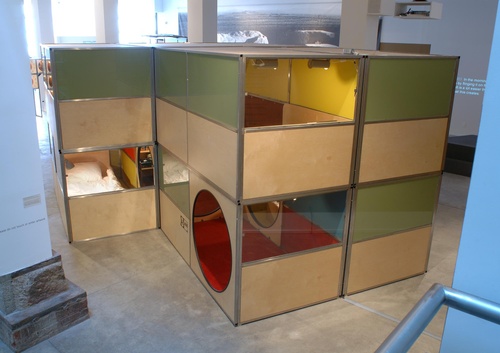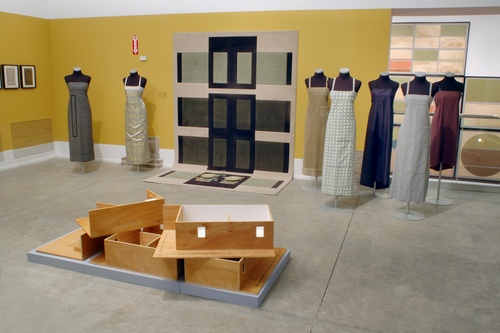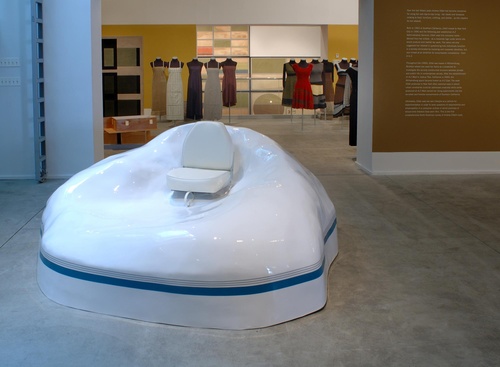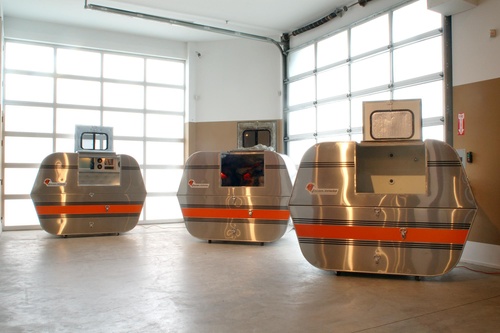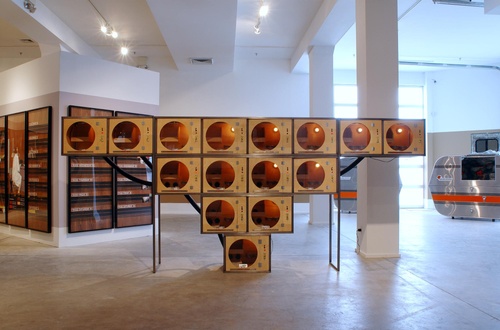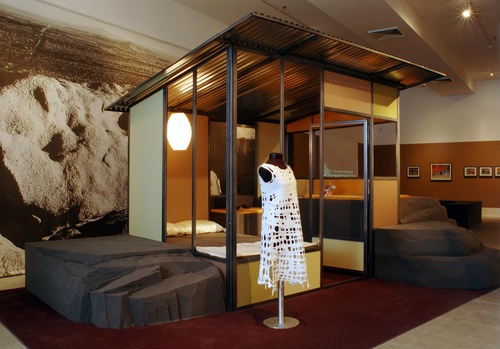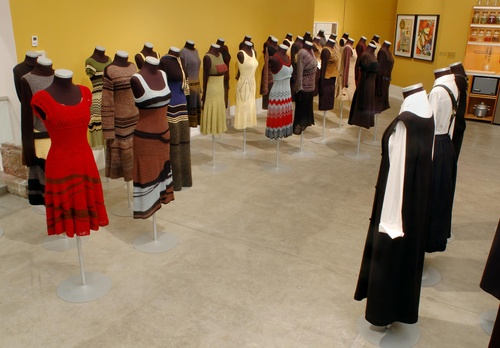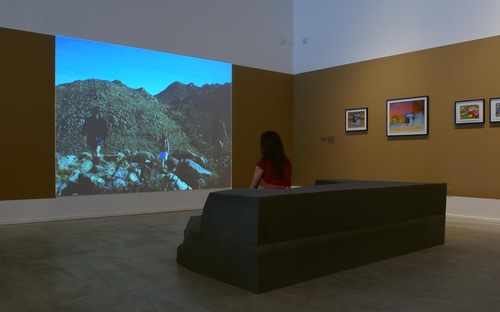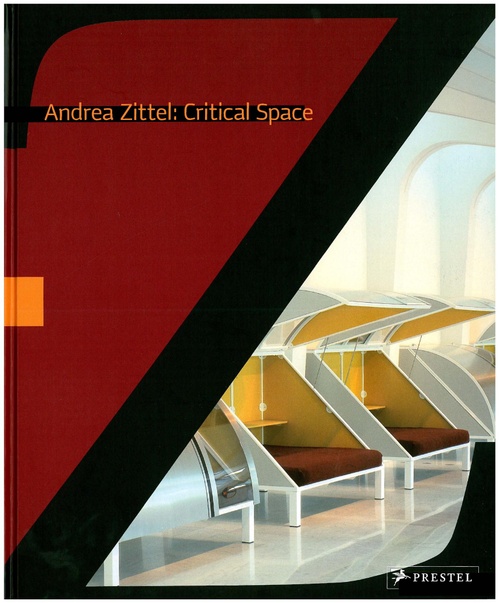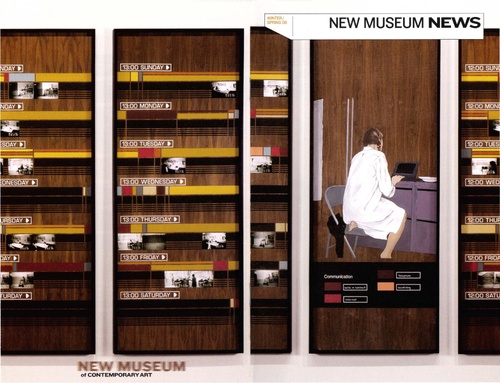Andrea Zittel: Critical Space
Andrea Zittel: Critical Space
“Critical Space” is the first comprehensive survey of Andrea Zittel’s work to take place in the United States. Over the last fifteen years Zittel has used her own day-to-day living - her needs and fantasies relating to food, furniture, clothing, and shelter - as the impetus for her artwork. From designing clothing to be worn every day for six months, to devising diets based on dehydrated food, to producing furniture that changes one’s sense of hierarchies and space, there is no area of daily living, no matter how basic, that she has not been willing to examine.
Born in 1965 in Southern California, Zittel moved to New York City around 1990. The contrast between the cleanliness of suburban California modernity and New York’s gritty urbanism provided fodder for early works such as Repair Work, 1991, a presentation of badly damaged objects that she collected off the street and on which she performed extremely rudimentary repairs.
In 1991, Zittel established A-Z Administrative Services. Zittel used this company name - derived from her initials - as a corporate banner under which she produced and marketed her work. The name not only suggested her interest in questioning how individuals function in a society dominated by branding and corporate identities, but also hinted at her ambition for encyclopedic competency. While it later functioned as a naming device or brand identifier for all her works, A-Z Administrative Services initially allowed her to negotiate fluidly with animal breeding companies that would not have been as responsive or immediately trusting had she presented herself as an artist. At that time, contact with these companies was important to her exploration of breeding and husbandry as analogous to ideas of selection and judgment both in the art world and in society at large. However, these interests would quickly shift from animals to humans. Even as she began to gain attention for works such as the A-Z Breeding Unit for Averaging Eight Breeds, 1993, that was presented in the 1993 Venice Biennale, her interest in human behavior was evident in sculptural models such as the Family Tree Apartment Complex, 1991, and drawings such as Clone Series, 1992. In fact, Zittel almost immediately began to see herself as the subject of her investigation and her lifestyle as a source of creative potential.
A-Z Administrative Services was established in Williamsburg, Brooklyn, in the first of a series of live/work spaces that was critical to the evolution of her work. A 200 square-foot storefront space had to contain all Zittel’s living and working needs: 100 square-feet in front as a public work space and the back left for private needs. This constrained environment motivated the first experimental structures that she designed to facilitate all her eating, cleaning, socializing, and storage needs in no more than 60 square-feet. The Management and Maintenance Unit 003, 1992, is the earliest extant work of this type and the precursor to the A-Z Living Unit, 1993. A portable version of the same idea, the A-Z Living Unit could fold down to the size of a steamer trunk and be reassembled wherever necessary. In 1994, Zittel expanded on this idea by collaborating with her clients: she would provide the basic structure and work with her clients to customize the details according to their needs and desires. Her next series, A-Z Escape Vehicle, 1996, took this process of collaboration from the realm of utility to the realization of her clients’ escapist fantasies. Adorning a small portable pod with anonymous metal siding, Zittel created an interior environment that, like the -, could be customized according to personal preference. Instead of specifying surface details or choosing objects, clients imagined their own detailed and intimate environments such as a flotation tank, a cave-like grotto, and a lounge based on customized panel vans popular in the 1970s. The A-Z Escape Vehicles touched upon ways that people often attempt to escape a large and increasingly uncontrollable world by creating personal limitations for themselves.
In 1995, Zittel purchased a small three-story building in Williamsburg that was christened The A-Z. In this environment, she produced furniture prototypes and held social events for people in the community. By turning her home into a showroom and testing ground for her work, Zittel began an investigation into the socially constructed divisions that we make between private and public life in contemporary society. After the establishment of A-Z West in Joshua Tree, California in 2000, the Williamsburg space became known as A-Z East. While the work Zittel produced in New York often explored ways in which urban constraints could be addressed creatively, works produced at A-Z West, such as the A-Z Cellular Compartment Units. 2001, and A-Z Homestead Units, 2001-05, carried her living experiments into the ex-urban and frontier environments of Southern California. One of the highlights of the exhibition is a representative selection of Zittel’s A-Z Uniforms, 1991-2005. Like A-Z Administrative Services, the A-Z Uniforms were a solution to maximize Zittel’s extremely limited resources. These works began as an attempt to produce clothing that she could wear for all work and social engagements over a six-month period, allowing her to look stylish but avoid the expense of seasonal fashion changes. In the uniforms one can see both an expression of personal fantasy - unusual combinations of color and material - and a clear evolution of material choices. This begins with multi-functional black-and-white garments, followed by simple rectangles of woven cloth inspired by the Russian Constructivists. Zittel then reduced the rectangular ‘panel’ of fabric to the strand - which was successively knitted, crocheted, and finally hand knotted. Most recently, in the A-Z Raugh Uniforms, she works with the purest medium of raw wool. This process led her to realize that it is easier to be creative when the parameters are narrowed than when all options are possible. Zittel coined the term Raugh (pronounced “raw”) in relation to her use of simple materials and elemental design strategies to make objects that will look better as they become naturally worn or undone as a result of lived experience.
Zittel’s drive for direct control and immediacy often parodies the methods of industrial production and corporate branding while exploring the ironic way that so-called progressive designs often refer to supposedly pure or primitive models. She uses A-Z in all her titles, as one would a logo or brand. The production of the early uniforms on a regimented season-by-season basis plays off the rhythms of the fashion industry, while the annual variations of the A-Z Living Units, A-Z Comfort Units, and A-Z Escape Vehicles operate much as a suburban home model or car brand gets modified and modernized each year. Ultimately, Zittel uses her own lifestyle as a vehicle for experimentation to raise questions about responsibility and emancipation in a consumer culture in which promises of leisure-time freedom have worn thin.
